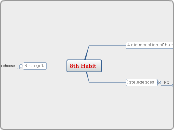arabera Alicia Fernández 1 year ago
167
Classification of Living Things (Protista Kingdom)
The kingdom of protists, recognized for its diversity and significance in biological taxonomy, encompasses organisms that exhibit traits between plants and animals. These eukaryotic entities can be unicellular or multicellular and are classified into various groups such as Amebozoa, Alveolata, and Rhizaria, among others.









